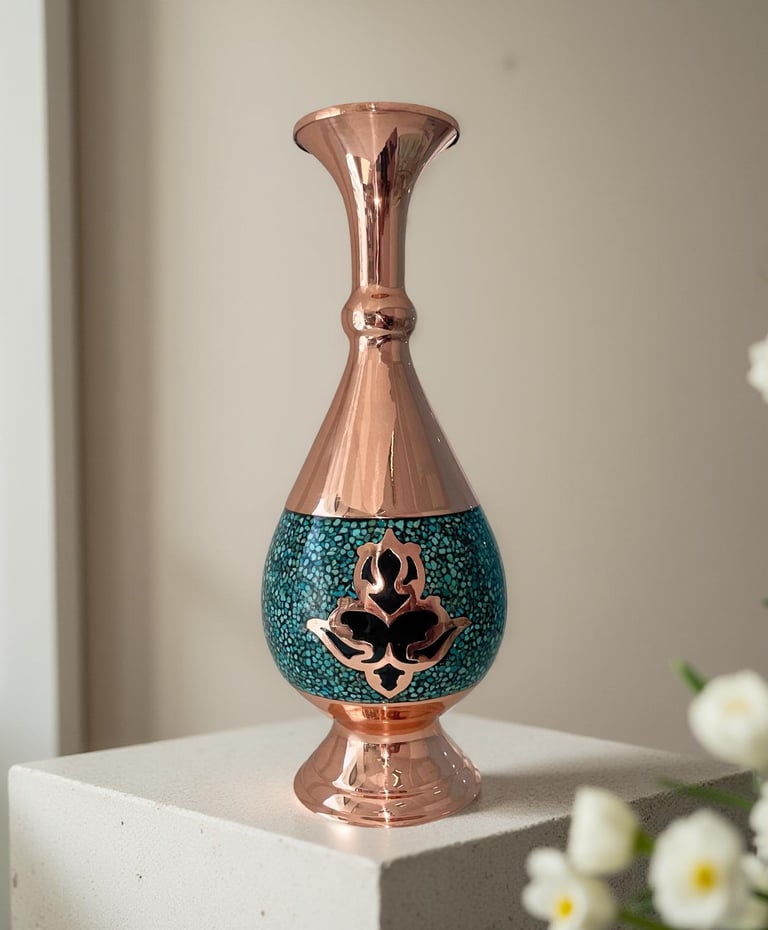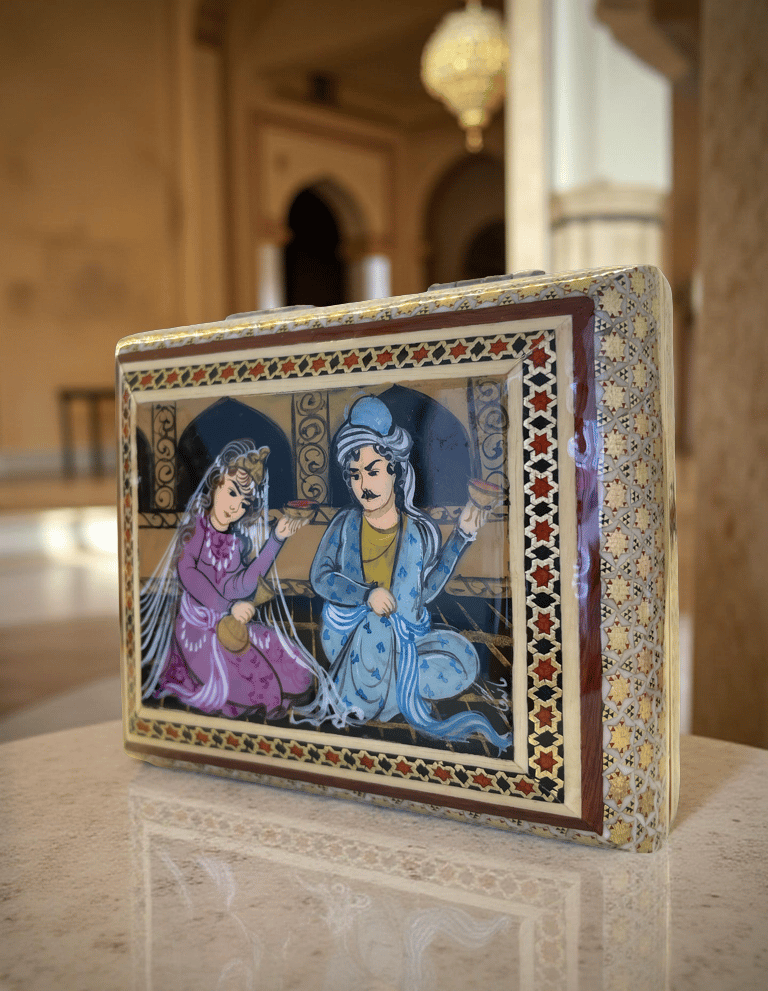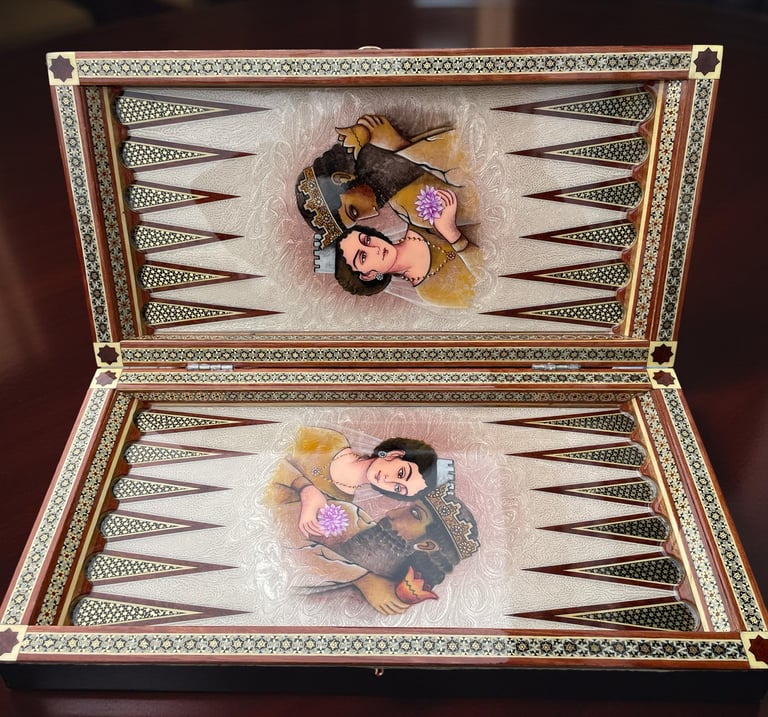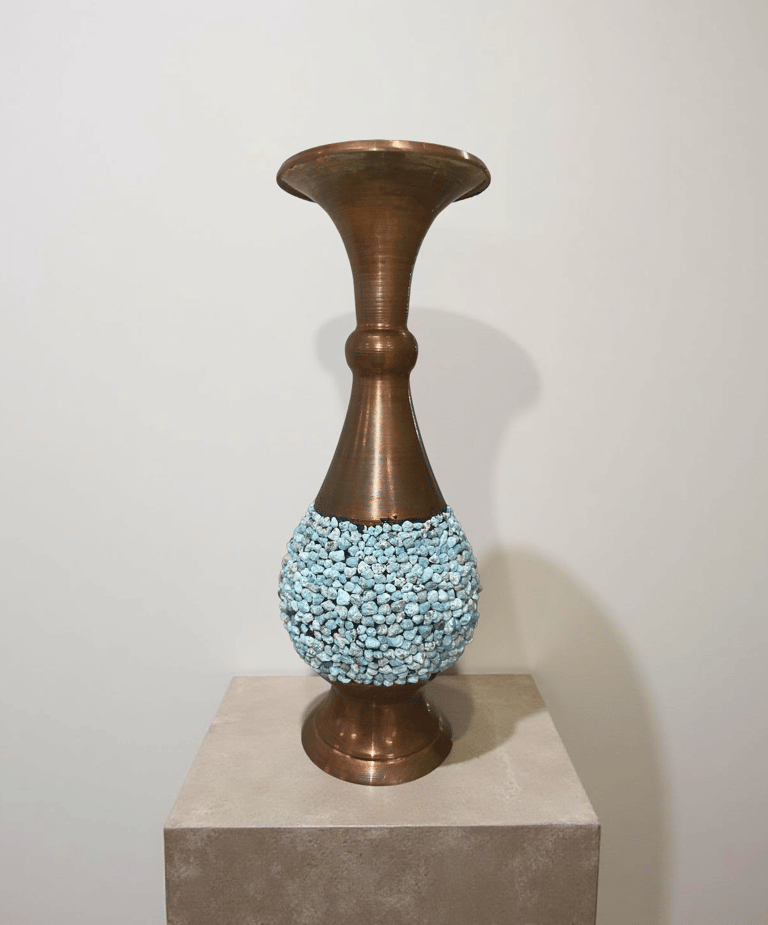THE ART OF PERSIAN CRAFTSMANSHIP
There is something truly special about holding an object shaped by human hands. In the case of Persian craftsmanship, that magic feels even deeper — from glowing copper vases inlaid with genuine turquoise to jewelry boxes and chess sets decorated with the ancient technique of khatamkari. These are not just objects — they are small treasures, each with its own story.
Persian artisans have been working with copper for centuries. Known for its durability and warm glow, copper is hand-hammered, shaped, and polished until it shines with a rich, rosy finish.
HANDCRAFTED COPPER POTTERY WITH TURQUOISE


And then comes the most captivating step — inlaying genuine turquoise from Iran.
Stone selection: Tiny turquoise fragments are carefully sorted by size, shape, and color.
Surface preparation: The copper surface is coated with a special resin.
Inlaying: Each turquoise chip is placed by hand, one by one, until the entire surface is covered.
Polishing: Once the piece is set, the surface is smoothed and polished so that the copper and turquoise shine together in harmony.
This process, known as firoozeh koobi, transforms a simple copper vase into a true work of art. No two pieces are ever identical — their uniqueness is part of what makes them so collectible.
If copper and turquoise are about contrast and brilliance, khatamkari is about patience and precision.
Khatamkari is an ancient Persian form of marquetry where tiny pieces of wood, metal, and bone are assembled into intricate geometric patterns, often forming stars and hexagons. This technique dates back to the Safavid dynasty (16th century) and is still passed down from master to apprentice today.
KHATAMKARI: THE PERSIAN ART OF MARQUETRY


HOW A JEWELRY BOX OR CHESS SET IS MADE
Designing the pattern: The artisan begins with a geometric design plan — often hexagons and stars.
Creating the rods: Slivers of wood (ebony, walnut, orange), brass, and bone are glued together into long rods that reveal the pattern in cross-section.
Slicing the rods: These rods are sliced into paper-thin pieces, each one a perfect miniature of the pattern.
Application: The slices are glued onto the surface of the jewelry box, chessboard, or backgammon board.
Sanding and lacquering: The surface is sanded smooth and coated with lacquer, giving it protection and a glossy finish.
The result is luxurious, precise, and absolutely unique, combining deep tradition with timeless beauty.
Many khatamkari pieces are finished with hand-painted miniatures — delicate scenes inspired by Persian poetry, mythology, or daily life. These paintings add a narrative element, turning each piece into a storytelling object.
HAND-PAINTED MINIATURES




WHY THESE PIECES ARE SO SPECIAL
Each one is an original: Because they are handmade, no two are ever the same.
Cultural heritage: These techniques have been passed down for centuries and are still alive today.
Functional beauty: These are not just decorations — your vase, jewelry box, or chessboard can be used and admired every day.
Owning one of these pieces means becoming part of a story that has been written for generations.
*Making in progress picture
THE ART OF PERSIAN CRAFTSMANSHIP
Copper pottery with genuine turquoise & Khatamkari
SUBSCRIBE
Subscribe to our newsletter to always be the first to hear about recent news and products!